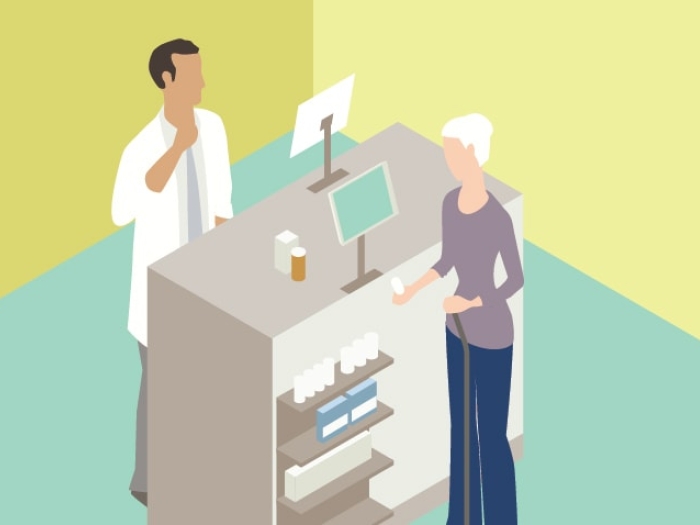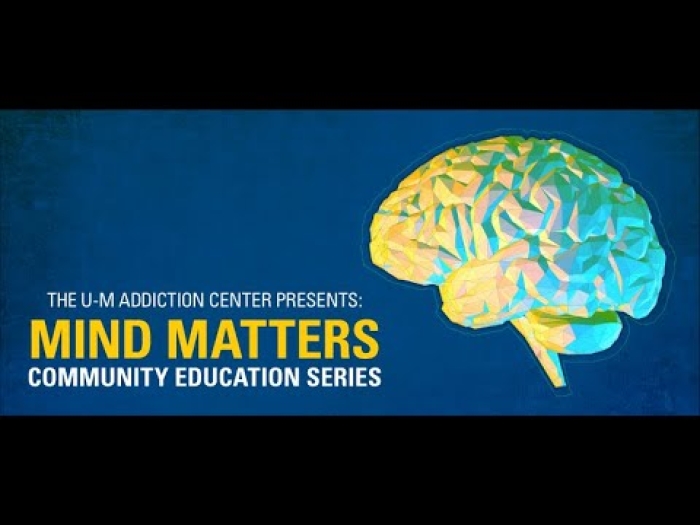Deaths from prescription and illicit opioid drugs have quadrupled since 1999. A drug safety researcher explains the must-do’s to stop these deaths and curb addiction nationwide.
7:00 AM
Author |

Amy Bohnert, Ph.D., MHS, isn't a physician, a nurse or a drug addiction counselor. But her work may help countless people whose lives have been turned upside down by the addictive pull of opioids — both legal prescription painkillers and illegal drugs like heroin.
SEE ALSO: Why Doctors Love Opioids and Hate Marijuana for Chronic Pain
Bohnert is a health services researcher at the U-M Medical School and the Ann Arbor VA. By crunching massive amounts of health care data, working with policymakers and police and partnering with medical teams to test new ideas, she's become a leading voice on an epidemic that has spared no corner of America. Here's her take on the situation.
What should health care providers know about the opioid situation in our country?
Bohnert: The staggering situation we find ourselves in has resulted from a combination of overprescription of opioid pain medication, and the rise in demand for illicit opioids. The latest data show that in the most recent year we have full numbers for, 2013, over 10 million American adults used prescription painkillers without a prescription, or not in keeping with their prescription. About 2 million of them meet the criteria for addiction to those drugs.
Meanwhile, deaths have quadrupled since 1999 from overdoses of these prescription painkillers, and from overdoses of the illicit opioid drugs like heroin.
At the same time, we continue to see widespread use of these drugs in people who may not actually benefit from them. Another new report says that one in three Medicare participants has been prescribed an opioid painkiller in the last year.
We're now at a point where more American adults die from an accidental overdose of opioid drugs than die in all crashes of cars, motorcycles and other motor vehicles put together.
And these numbers don't include the toll that misuse, addiction and overdose have on families and communities, not just the individual, including impacts on the growing number of babies born to women who are addicted to opioids.
What sparked your interest in opioid abuse and overdose?
Bohnert: When I came to Michigan in 2008, I was focused on doing research on suicide among veterans, a priority for the VA health care system. In the process of studying suicide, I found myself looking at all causes of death for VA patients nationwide. And I saw what folks at the Centers for Disease Control were also noticing around the same time in the national causes-of-death data: a dramatic increase in the number of unintentional overdose deaths in the U.S. These are accidental deaths from too much of a drug, not suicides where someone takes a handful of pills to end their life.
As we looked further, we showed that this rise in accidental overdoses was clearly driven by the increased prescribing of opioid medications. And that increase had come in response to efforts to treat pain, especially pain outside of the end of life, more aggressively.
Meanwhile, others began to show that heroin overdose deaths — which are also largely unintentional — had surged in the past several years, compounding this problem.
Have you seen the effects of opioids firsthand?
Bohnert: When I was earning my public health degree, in the mid-2000s, an acquaintance relapsed on heroin and died of an overdose unexpectedly. She was in her 20s.
I saw the pain of her close friends. I heard the stories of how the people who witnessed her overdose delayed calling 911, fearing legal repercussions.
As a result of seeing this problem at both a personal level and a national level, I dedicated the focus of my work to understanding and preventing overdose.
We need new and creative policy solutions and programs that mobilize the physician workforce, particularly in rural areas. They, and only they, can be the critical piece of the solution, of course with help from the other types of care providers.Amy Bohnert, Ph.D.
As a professional, what effects have you witnessed?
Bohnert: There's the impact that teamwork among researchers, health care providers, law enforcement, elected officials and nonprofits can have in confronting this issue.
SEE ALSO: Over Time, Marijuana Use Dampens Brain's Response to Rewards
For instance, working with a team in the U-M Emergency Department, I was able to see that we could make a real difference in the attitudes and behaviors of patients who use opioid painkillers in risky, nonmedical ways.
Just one counseling session with a nonjudgmental, trained social worker while they were waiting for emergency care for any sort of medical issue led to lower levels of opioid misuse and overdose risk behaviors six months later, compared to a group of patients who just received a pamphlet on overdose risk. We've published these findings and are sharing the toolkit for doing this kind of intervention with anyone who'd like to use it.
I've also witnessed the lifesaving effect of new thinking by law enforcement that expands their role as first responders to treat overdose victims on the spot with naloxone, a drug that reverses the effects of both prescription and illicit opioids. The Washtenaw County Sheriff's Office (the county where the University of Michigan is located) has done this, and in the first six months, officers administered it to overdose victims 11 times.
I've watched what the city of Baltimore has achieved in the face of an especially bad heroin epidemic, since it's where I earned my Ph.D. The city government paid for physicians to get the training and licenses needed to prescribe buprenorphine, also called suboxone. That's a drug that can help heroin users reduce their cravings and avoid withdrawal when quitting use of heroin or other opioids, and it can be given to them by their primary care doctor, unlike methadone. The number of patients treated with methadone or suboxone in Baltimore nearly quadrupled, and the number of heroin overdoses dropped dramatically.
What will it take to overcome this issue nationally?
Bohnert: Now that so many more people are aware of and focused on the opioid issue and willing to find research and innovative solutions, I'm more hopeful than I had been.
I've been asked to provide scientific guidance to groups tackling the issue on the state and federal levels, both the Michigan Prescription Drug and Opioid Task Force that issued its report last December, and the group that prepared the CDC's new prescribing guidelines that came out this spring.
Those two documents are already forming the framework for a number of local and national initiatives, and for legislation that can help make the recommendations a reality.
For instance, legislators seem to agree that we need to overhaul the Michigan prescription drug monitoring program that allows prescribers and pharmacists access to data to know what all of the doctors in the state have prescribed to a specific person.
There are many efforts underway nationwide to increase the availability of naloxone, in its spray and injectable forms. I think naloxone is a reasonably cost-effective approach and could certainly help the overdose problem, particularly in communities that have been hard-hit by heroin in the last several years. However, to make our dollars count in this area, we need to be sure we are getting the right naloxone product in the hands of those who are likely to witness an overdose, and training them in what to do.
But we particularly need solutions that don't just wait for an overdose to occur.
First and foremost, that includes responsible prescribing in line with the new CDC guidelines. It also means we need to educate people who are prescribed opioids in the factors that can put them at risk of an accidental overdose such as drinking alcohol, or taking certain other medications.
Communities can also work with law enforcement to set up medication take-backs and medication drop boxes, to reduce the supply.
How can treatment expand to help those with opioid problems?
Bohnert: This is a major target for impact since research has shown that addiction treatment reduces overdose risk in the long term.
It's especially true for medication-assisted therapy, which is the term for combining cognitive and behavioral treatments such as 'talk therapy' with an anti-opioid medication, either methadone or suboxone.
Unfortunately, many, many people who need this kind of treatment do not have access to it. My colleague who prescribes suboxone as a clinician in substance abuse treatment at the VA gets several calls a week from nonveterans who are desperately searching for anyone to prescribe to them, and who find his name in an online treatment locator.
In some areas, there are no doctors at all currently providing either medication. We especially have great potential for expanding suboxone access because it can be prescribed in primary care practices by physicians who obtain a waiver to prescribe from the Drug Enforcement Agency. A new final rule published this week will more than double the number of patients a suboxone prescriber can treat.
We need new and creative policy solutions and programs that mobilize the physician workforce, particularly in rural areas. They, and only they, can be the critical piece of the solution, of course with help from the other types of care providers.
There is an opportunity to have a tremendous impact and save lives right now, if we act on what the research has shown can work.

Explore a variety of healthcare news & stories by visiting the Health Lab home page for more articles.

Department of Communication at Michigan Medicine
Want top health & research news weekly? Sign up for Health Lab’s newsletters today!





